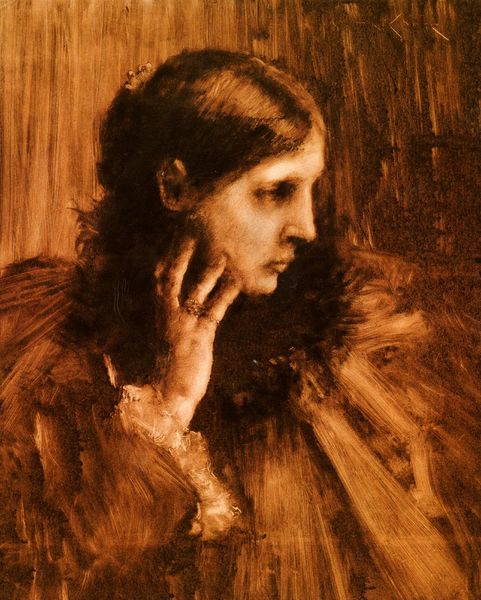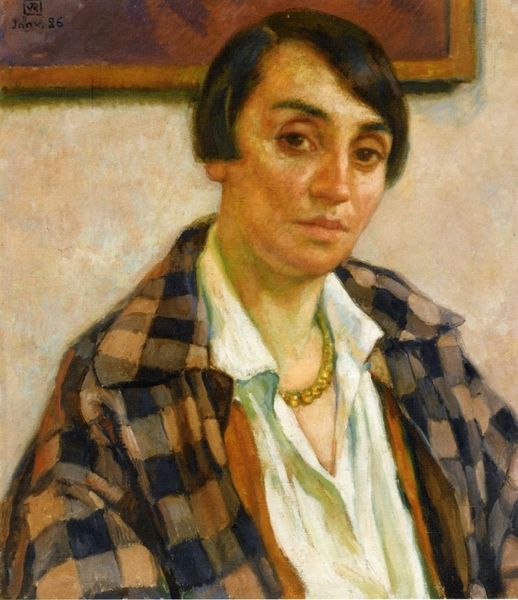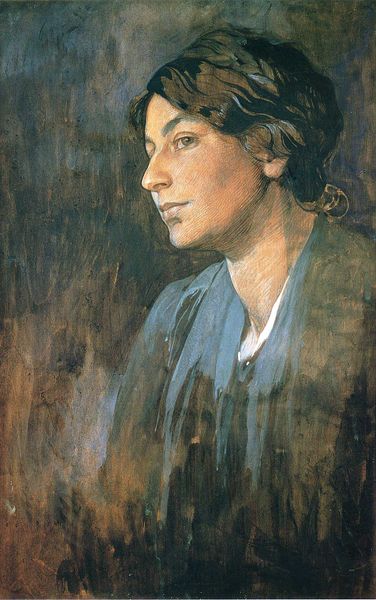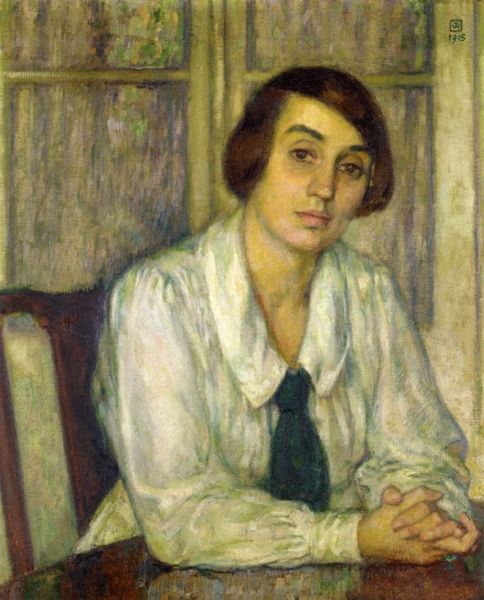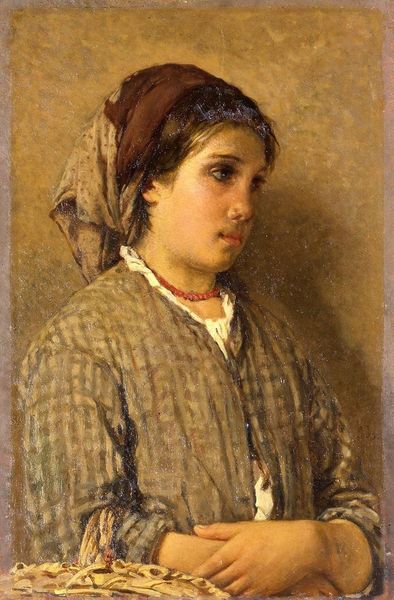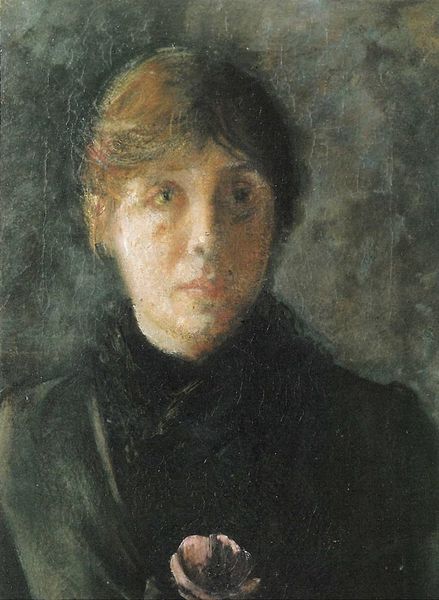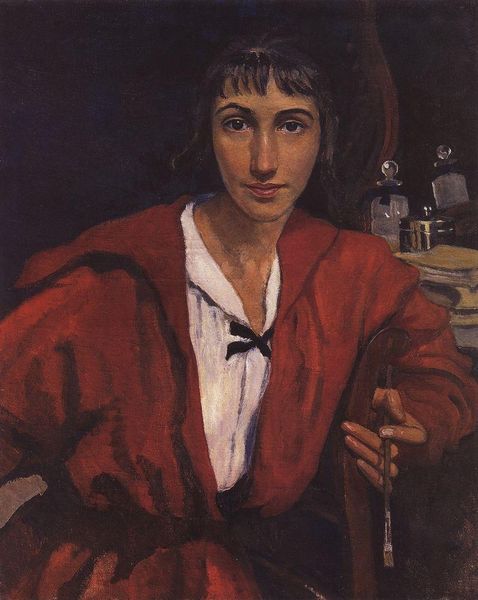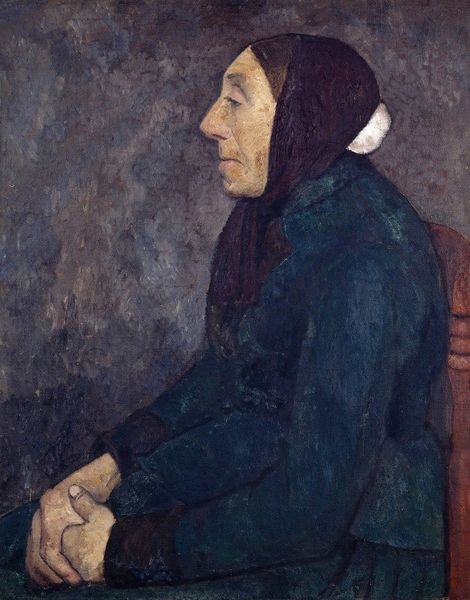
Copyright: Public domain
Curator: Albert Joseph Moore's painting, "The Mother of Sisera Looked out a Window," was completed in 1861 and showcases his characteristic Pre-Raphaelite style. What strikes you initially about this piece? Editor: The immediate impression is one of muted anxiety. The palette is constrained, dominated by warm browns and tans. It evokes a feeling of claustrophobia and restless anticipation. Curator: It’s interesting to consider that Moore, aligned with the Pre-Raphaelites, valued truth to nature, but here the emotional landscape takes precedence. Note the textures: the palpable weight of that intricate collar she wears and the contrasting smooth expanse of the oil paint describing the skin. How do these choices affect the storytelling? Editor: That heavy collar—ornate, almost suffocating—visualizes her societal status, yet it seems like a burden, doesn’t it? The window grill offers glimpses beyond the frame. The window's geometry imprisons as much as it reveals. Symbolically, she's trapped between her role and her maternal instinct, looking toward the distance for a victorious homecoming that clearly never comes. Curator: Exactly. The historical context here is critical. Sisera was a Canaanite general defeated by the Israelites. In the biblical account, his mother expects him to return triumphant, laden with spoils of war and female captives. How does this understanding reshape your initial read of the emotional register? Editor: Knowing the narrative intensifies the sense of dread, now seeing the painting as a portrait of tragic expectation. I can imagine the textile production of that dress, and who owned the resources. And this domestic prison must feel heavy and quiet and long. Her vigilant pose is heartrending precisely because her hopes are in vain, with history rendering her anxieties useless labor. It’s about what awaits her behind the image, which is death. Curator: Indeed. This particular Pre-Raphaelite image underscores how social conventions, biblical narrative, artistic choices, and materials converge to amplify the psychological drama. Editor: And it speaks to how a singular story reflects larger historical forces. Thanks to Moore, and his Pre-Raphaelite circle, it continues to resonate.
Comments
No comments
Be the first to comment and join the conversation on the ultimate creative platform.
